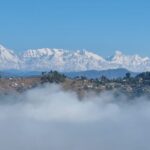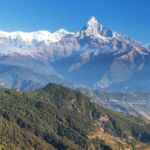Are you planning a trekking trip to the Himalayas? If so, you should know the risks of high altitude conditions, particularly regarding nosebleeds. High altitudes can cause a decrease in air pressure, leading to an accumulation of extra blood in the nasal cavities. Nosebleeds caused by this can be uncomfortable and even dangerous at times. Fortunately, you can take a few steps to reduce your likelihood of experiencing a nosebleed at high altitudes.
Tips for Avoiding a Nosebleeds Before it Occurs
- Proper Hydration: Drinking plenty of water is crucial to remain healthy, but it’s vital at high altitudes. Proper hydration can help normalize the blood in your nasal cavity and reduce the risk of nosebleeds. Be sure to carry a water bottle and drink plenty of fluids throughout your hike.
- Use a saline spray: Saline sprays can also help keep your nasal passages moist and prevent dryness that can lead to nosebleeds.
- Elevate Your Head: Try to elevate your head slightly above the rest of your body while sleeping. Reducing the blood in the nasal cavities can help prevent pressure buildup. A pillow or folded blanket can help prop your head in an elevated position.
- Avoid Certain Medications: Certain medications, such as decongestants, should be avoided if travelling to high altitudes. Decongestants can increase the amount of blood in your nasal cavities, making you more prone to nosebleeds.
- Avoid blowing your nose too hard: Blowing your nose too hard can irritate the delicate blood vessels in your nose and cause nosebleeds.
- Use a humidifier: Using a humidifier in your room at night can help keep the air moist and reduce the risk of nosebleeds.
- Take it slow: Ascending too quickly can increase your risk of nosebleeds. When trekking in the Himalayas, gradually allow your body to acclimate to the altitude.
If you take medications, speak to a health professional before your trip to determine if they should be adjusted or stopped.
How to Stop a Nosebleeds at High Altitudes
Don’t worry if you experience a nosebleed while at a high altitude because the treatment for nosebleeds remains the same regardless of altitude.
Normal Nosebleeds
To begin, make sure you are sitting upright or slightly leaning forward. Pinch the lower part of your nose firmly below the upper bony section using a tissue.
Heavy Nosebleeds
If you experience a heavy nosebleed, grab a paper towel or a facecloth and hold your nose for 10-15 minutes. If the bleeding persists, keep it for another 10-15 minutes.
Nasal Spray
If you are experiencing a nosebleed and need assistance stopping the bleeding, you may find relief using an over-the-counter nasal spray. Two commonly used nasal sprays are oxymetazoline (pronounced ok-see-muh-taz-uh-leen) and phenylephrine (pronounced fen-l-ef-reen). These sprays work by causing the blood vessels in the nose to contract, which can help slow or stop the bleeding.
Conclusion
No one wants to deal with nosebleeds at high altitudes, so taking the necessary precautions is essential. By following these tips, you can reduce your risk of nosebleeds and enjoy your trekking experience in the Himalayas to the fullest.
Please note that this blog is intended for informational purposes only. If you have any specific medical questions, it is recommended that you consult with your physician.





Leave a Reply